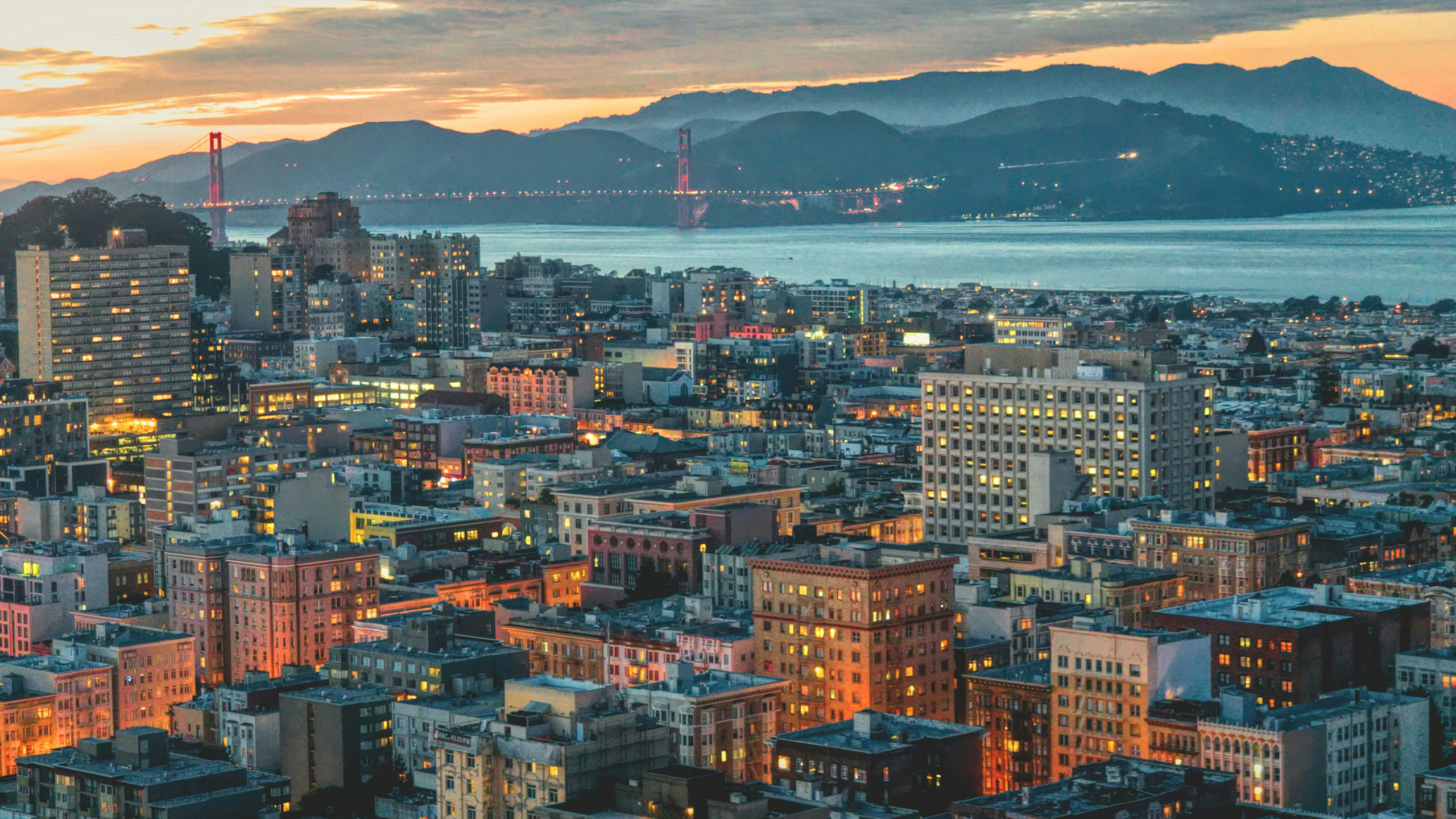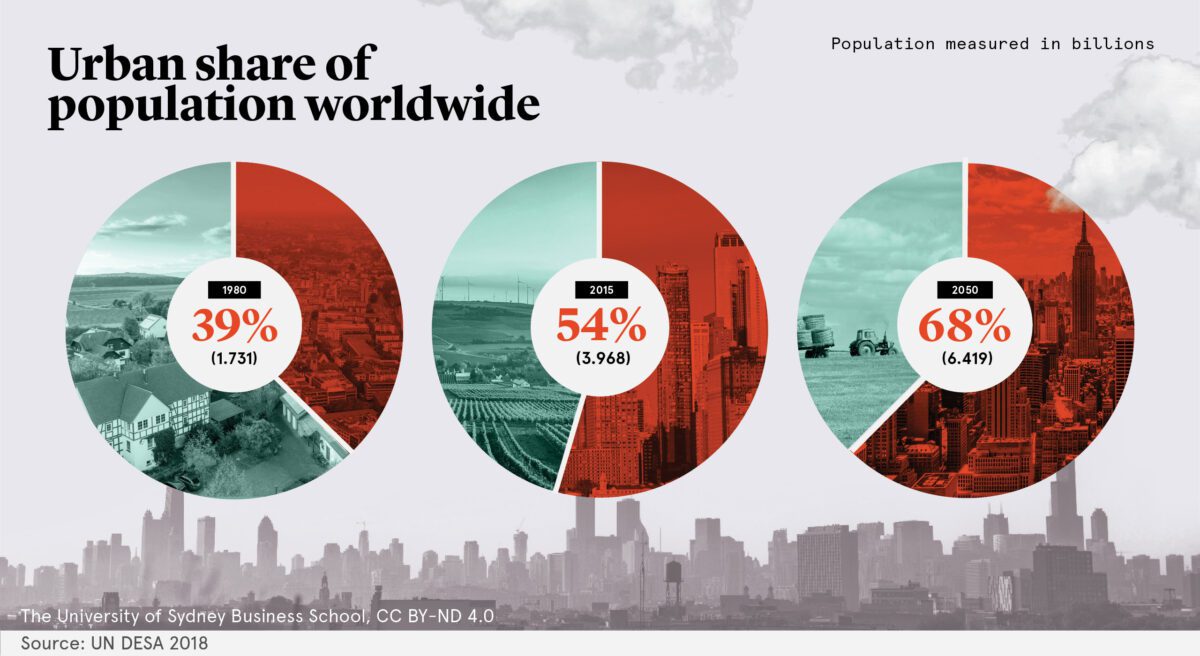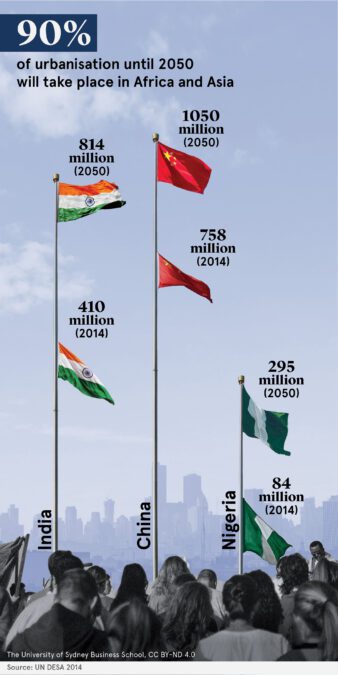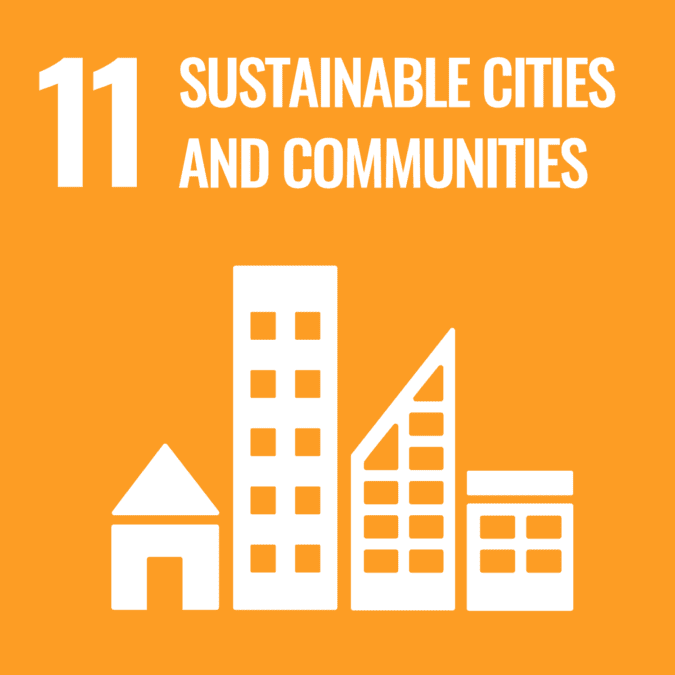
SDGs by 2030 – are we on track?
SDGs and the city
Over the next 50 years people living in low-income nations will undertake one of this century’s defining megatrends: rapid urbanisation. To accommodate this influx the number of cities in low-income countries will increase by almost 80 percent.
Cities are our future. In the next 10 to 15 years, the emergence of global cities in developing economies will fundamentally alter the balance of economic power, affecting everyone on the planet.
Sustainable Development Goal (SDG) 11 sets 4 goals for cities and ‘human settlements’: to be inclusive, safe, resilient and sustainable.
Business is the connective tissue pumping life into the urban ecosystem. Cities are where the day-to-day economic and political decisions take place. The interaction between firms and cities is a critical relationship driving local, regional, and even global welfare. My research investigates global cities and their locational attributes vis-à-vis multinational enterprises.
Lagos, Nigeria, is set to become the world’s most populous city by 2100, home to 88 million people. Altogether by next century African cities will make up 13 of the 20 largest cities in the world. Historically, rapid urbanisation has produced economic growth. But where urbanisation is achieved chaotically (read slums), the benefits of urbanisation are not experienced equitably. In Asia, where the share of urbanisation is projected to increase by 64 percent by 2050, the 130 million South Asians currently living in slums could be expected to balloon.
By 2050 nearly 7 out of 10 people will live in cities. Cities are the major engine driving economic and social life which is why achieving SDG 11 is critical to the success of many of the other goals. Urbanisation brings issues around policy, environmental safety, and resilience. If we don’t get cities right then we are not going to manage the challenges of global poverty, climate change, and decent work environments.

Implementing the targets across all the SDGs will happen at city-level not at the national layer. For example, a global network of 100 mayors from the world’s leading cities have committed to cutting their CO2 emissions in half by 2030. This policy will either attract or repel businesses to these places, which in turn will impact each city’s character along with its emission levels.
Through their decisions about what infrastructure (physical and digital) to provide, city administrators also have the power to determine what sort of business will want to locate there and exclude those who do not suit the local conditions. In turn, the businesses’ behaviour will impact the city’s employment, its health ratings (community and individual), and other social measures such as wage levels and rates of poverty.

Businesses and cities evolve symbiotically.There are many examples where urbanisation has grown out of big businesses. Somecities have become synonymous with a particular company (Billund and Lego, Hershey and chocolate) or with particular industries (San Francisco and hi-tech, London and finance, Milan and fashion).
Size is not what matters for global city status. Mega cities (10+ million people) are not always global cities and global cities are not necessarily mega cities.
Under one million people live in Copenhagen and Zurich. By international standards these are not big cities, but both are recognised as global cities. Both places are attractive to multinational businesses and expatriates due to their cosmopolitan environment, global connectivity, and access to advanced producer services such as international companies of law, marketing, and consulting.
On the other hand, many mega cities – Mumbai, Karachi, Chongquing, and Lagos for example – lack the features necessary to operate as a dynamic international hub.
In the competition for scarce resources (business being a specific resource), city managers need to develop the skills to undertake scenario planning, imagining where they want to see their city in 10, 20 even 50 years’ time. They will also need to imagine what multinational businesses will look like across those same timelines and implement the social, financial, digital, and physical infrastructure to attract the type of businesses that will co-create the place they envision. Not all cities can afford to be ‘smart’, high tech, or designated ‘green’ locations. Heavy manufacturing will continue to be an essential industry and some cities will need to pitch their policy settings to appeal to this sector.
Cities, I believe, are the relevant level of analysis to have ‘SDG’ conversations about issues like improving water quality and education or reducing pollution, because this is where people, organisations, and businesses conduct their day-to-day activities. As the saying goes: you can think globally but we act locally.
SDG 11 will impact everything in human experience. It will affect our living conditions, individual and communal health, who gets to live in poverty and who will enjoy affluence. Ultimately our happiness, and its opposite, will rest on the achievement of this goal.
Sustainable Development Goal (SDG) targets addressed:
Target 11.3 By 2030, enhance inclusive and sustainable urbanization and capacity for participatory, integrated and sustainable human settlement planning and management in all countries.
Target 11.6 By 2030, reduce the adverse per capita environmental impact of cities, including by paying special attention to air quality and municipal and other waste management.
Target 11.7 By 2030, provide universal access to safe, inclusive and accessible, green and public spaces, in particular for women and children, older persons and persons with disabilities.
Target 11.a Support positive economic, social and environmental links between urban, peri-urban and rural areas by strengthening national and regional development planning.
Target 11.c Support least developed countries, including through financial and technical assistance, in building sustainable and resilient buildings utilizing local materials.
Resources
Q1a. Using material from below, choose a global city and argue for why particular types of businesses or sectors may be particularly attracted (or repelled) in terms of location in or around this city. Justify your answers by discussing what specific characteristics at city-level that may attract or repel certain types of businesses.
Q1b. Using material from below (in particular city rankings), what other cities may your choice of global city in Q1 be in direct or in-direct competition with and why?
Q2. Discuss the importance of cities and urbanization in relation to one or more of the other UN-17 SDGs. Comment on the importance of cities and their interactions with business in reaching sustainability development goals.
Q3. How do cities and businesses co-develop to co-create urban eco-systems for future economic and social development at local and regional levels?
Articles
- Asmussen, C. G., Nielsen, B. B., Weatherall, C. D., & Lyngemark, D. H. (2019). Foreign ownership and global city characteristics: Unpacking the connectivity of micro-locations. Regional Studies.
- Goerzen, A., Asmussen, C. G., & Nielsen, B. B. (2013). Global cities and multinational enterprise location strategy. Journal of international business studies, 44, 427-450.
- Goerzen, A., Asmussen, C. G., & Nielsen, B. B. (2024). Global cities, the liability of foreignness, and theory on place and space in international business. Journal of International Business Studies, 55(1), 10-27.
- The hunt for the world’s most sustainable cities
- How global cities compete
Podcasts and videos
- Thinking Global Podcast – Simon Curtis
- 30 Best Urban Planning Podcasts You Must Follow in 2024
- Global city videos
Websites
- World’s 100 Best Cities | World’s Best Cities
- Global Power City Index (GPCI) – Institute for Urban Strategies
- The 2023 Global Cities Report: The distributed geography of opportunity
- Share of the population living in urban areas, 10,000 BCE to 2050
- The distributed geography of opportunity: the 2023 Global Cities Report
- United Nations: Department of Economic and Social Affairs
- United Nations: Department of Economic and Social Affairs:2014 revision of the World Urbanization Prospects
- Urbanet: Share of the Urban Population Worldwide
Professor Bo Bernhard Nielsen is Professor of Business Strategy at the International Business Discipline at The University of Sydney Business School. His research is at the intersection of strategy, international business, and economic geography with a specific focus on multilevel issues pertaining to strategic collaboration, firm internationalization, and strategic decision-making across borders.
Share
We believe in open and honest access to knowledge. We use a Creative Commons Attribution NoDerivatives licence for our articles and podcasts, so you can republish them for free, online or in print.




